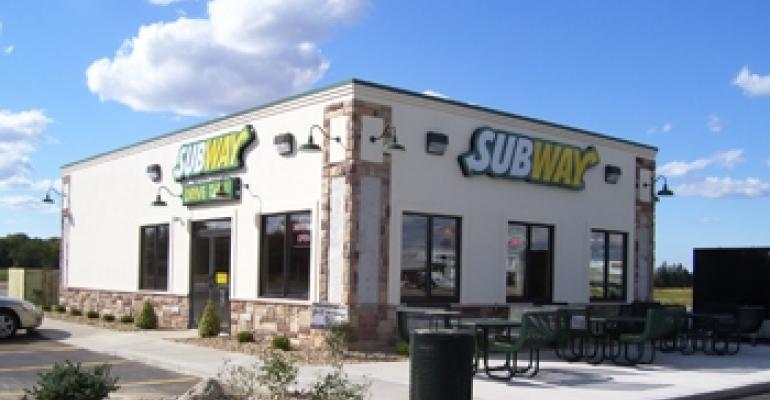
Subway, the ubiquitous sandwich shop that has grown to have more U.S. locations than even fast food giant McDonald’s, still sees room for expansion in the United States.
The Milford, Conn.-based chain operates 23,833 locations throughout U.S., and opened roughly 1,000 new restaurants nationally last year. In 2011, it has its sights on adding between 800 and 1,000 more U.S. locations.
To do that requires a sophisticated real estate strategy, which is exactly what the firm has developed. So even though all of its restaurants are run by franchisees, real estate decisions are handled at its corporate headquarters.
Subway employs so-called field developers in areas where it’s looking for new stores. The field developers scout local markets with prospective franchisees, then contact Subway’s real estate department for site approval. The site is analyzed using Subway’s proprietary demographic mapping system, and if it fits Subway’s criteria, the in-house leasing specialists contact the landlord about signing a new lease.
Unorthodox approach
After Subway negotiates the lease with the property owner, it then sublets the space to the franchisee. Today, Subway’s real estate department employs about 30 experienced real estate professionals, according to Don Fertman, Subway’s chief development officer
This is not a typical arrangement for franchise operations. Many times, franchise businesses have individual owners assume most of the responsibility for their real estate, says Jim Thompson, managing director with Regency Centers, a shopping center REIT that currently has 117 Subway restaurants in its 400-center portfolio. For a landlord of Regency’s size, that means having to negotiate leases with hundreds of franchisees in different markets. In Subway’s case, Regency is able to maintain an ongoing relationship with a few key people within Subway’s real estate.
Plus, the sublease model allows Subway to bring in a new franchisee if an existing one is failing, limiting the need for restaurant closings, Thomson notes. “Subway is so protective of the brand, we just tend not to lose them,” he says. “The franchisee may go away, but they are pretty quick to replace them. From a landlord’s perspective, it’s like you are dealing with a corporate tenant.”
The catch is that Subway normally wants its landlords to include several short-term renewal options in the leases, in case the restaurants don’t perform as well as expected.

Over the next five years, the chain would like to open a significant number of stores in what it calls its “low density” markets—Philadelphia, Boston, Southern California and the outer boroughs of New York City. (A low density market is Subway’s term for a market that has less than one store for every 12,000 people.)
While Subway’s management prefers restaurants in the 1,200-square-foot to 1,800-square-foot range that best serve its needs because such sites allow for large seating areas, the chain can occupy almost any size space and make it work, Fertman says. It operates locations in grocery-anchored shopping centers and next to big-box stores and in free-standing buildings. It also has stores in regional malls, but has tried to cut back on that format after traffic counts dropped dramatically in the most recent recession.
“Give us a few hundred square feet and we are there,” Fertman notes.
Target markets
In Fertman’s experience, it’s been easier for the brand to secure new locations in markets that have at least a one or two stores for every 12,000 people because there is greater brand awareness, and therefore, greater interest from potential franchisees. “As you add restaurants, you generate a lot more interest in the brand,” he notes.
Another real estate strategy going forward will involve opening more drive-through locations. In the past, operating successful drive-through restaurants had been difficult because of Subway’s emphasis on customized sandwiches—people got used to seeing the product selection in front of them, something that was difficult to execute in a drive-through environment, Fertman says. But after a few resourceful franchisees managed to successfully implement a drive-through model, representatives from Subways’ headquarters studied their strategies and created a template for drive-through stores.
Fertman’s advice for other retail and restaurant operators looking to expand seems counterintuitive. At first, think small, he says. He advises that when trying out a new market or a new strategy, retailers might want to start with only one or two stores, and they should be wary of paying too much for their real estate.
“I think retailers when trying to conquer a market make the mistake of going to the largest, highest profile location they can find,” he says. “And as a result, they overpay in terms of rent and maybe over-expose [the brand] before the market is ready. It’s better, at least in our type of business, to conquer the market in little increments, by establishing a number of locations in more affordable areas and build the brand one location at a time. That’s a strategy that’s worked for us.”

